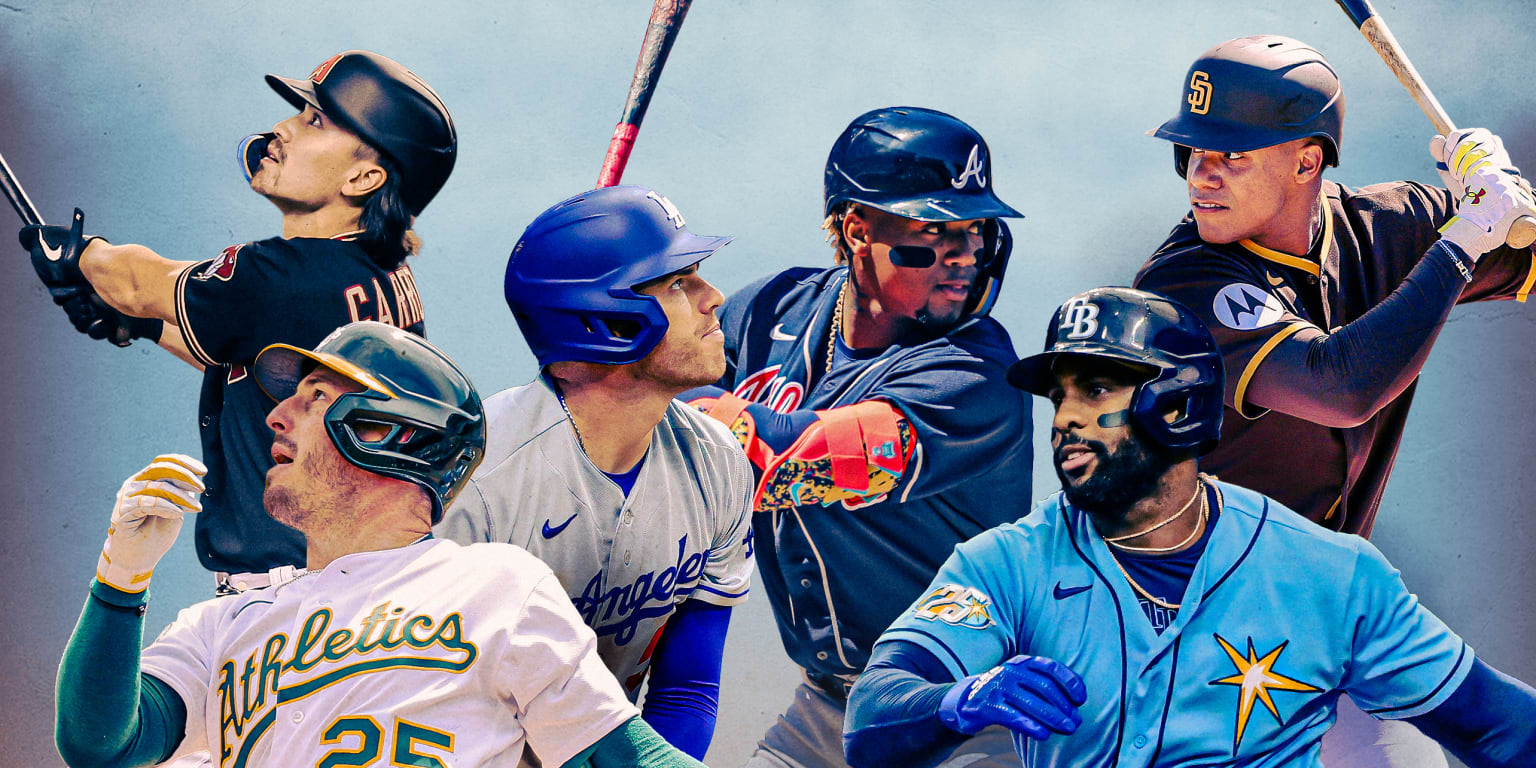
Just before the All-Star break, we explored which pitchers had been dominant on specific pitch types this season. As such, it’s only natural to dive into the same phenomenon, in reverse. Which hitters have been most successful when going up against certain pitch types so far?
To answer this, we’ll once again focus primarily on Statcast’s Run Value metric. Feel free to glance at this page for a more detailed definition, but to summarize, the premise of Run Value is that it accounts for the impact of each individual pitch based on the runners on base, outs, and ball and strike count. This is important because many other existing advanced metrics only account for certain subsets of pitches -- e.g., whiff rate only includes pitches that were swung at, while batting average and xwOBA only consider the final pitch of any plate appearance. But, of course, taking a pitch to turn an 0-0 count into a 1-0 count still is a positive outcome for the batter, an outcome which Run Value accounts for.
With all of that being said, here are the best hitters against each of the six most common pitch types so far this season. While Run Value is the primary determinant of these choices, there were some other underlying metrics that were considered as well (whiff rate, wOBA, xwOBA, etc.).
All numbers are entering July 20
Freeman doesn’t just have MLB’s highest Run Value against 4-seam fastballs -- his +21 output against 4-seamers is six more runs than any other hitter against any pitch type this season. His raw numbers against 4-seamers are elite across the board, with a .380 batting average, .736 slugging percentage and .473 wOBA. But such dominance is nothing new for the seven-time All-Star. In each of the past eight seasons (including 2023), Freeman has had at least a .298 batting average and at least a .530 slugging percentage against 4-seamers.
Carroll’s remarkable rookie season has been among MLB’s biggest storylines all year, and the ability to hit sinkers is one of the many skills that he’s shown off so far. Though Caroll ranks just behind Mookie Betts in Run Value against sinkers, he ranks in first place in OBP (.500), slugging percentage (.795) and wOBA (.533) among 131 players to have at least 50 plate appearances end in sinkers. But, perhaps even more impressively, Carroll’s +9 here isn’t even his highest Run Value against a pitch type. Thanks to a .352 batting average and .716 slugging percentage, he also has a +13 against 4-seamers, for good measure.
While the sample size of cutters is much smaller across the sport than it is for 4-seamers or sinkers, Rooker has still stood out with his elite performance against such pitches, one reason that the 28-year-old was a surprise All-Star after being claimed off waivers in the offseason. Beyond ranking near the top of MLB in Run Value, Rooker has five homers against cutters this season, tied for most in MLB with the Twins’ Max Kepler. This has led to a .500 batting average and a preposterous 1.700 slugging percentage on such pitches for Rooker, numbers that jump off the page even when accounting for the smaller sample. His slugging percentage and .764 wOBA lead all players with at least 15 plate appearances ending in cutters.
Acuña actually isn’t quite MLB’s leader in Run Value against sliders, as he ranks in second, slightly behind the Rangers’ Adolis García. But Acuña’s underlying metrics are stronger, giving him the slight nod here. Against sliders, Acuña’s batting average (.324), OBP (.398), slugging percentage (.649), wOBA (.439) are all better than García’s, as are his expected values in each of those four metrics. Acuña also has a remarkable average exit velocity of 96.8 mph against sliders this season, a full 1.5 mph higher than the next-closest player with at least 25 batted balls against sliders (Gunnar Henderson). While the overwhelming NL MVP favorite has been effective against pretty much every pitch type this season, the way he has feasted against sliders stands out the most.
Díaz’s Run Value against curveballs leads MLB, as his production on such pitches has been off the charts. Among players with at least 20 plate appearances ending in curveballs, Díaz ranks first in MLB in batting average (.545), OBP (.565) and wOBA (.687). He only has two strikeouts on plate appearances ending in curveballs, and he, like Rooker, made his first career All-Star appearance this season. In fact, he has been almost as likely to hit a home run on a curveball (three instances this season) as he has been to swing and miss at one (four instances).
Soto is just behind Freeman in the Run Value leaderboard against changeups, but, similarly to Acuña on sliders, Soto has elite numbers in several other metrics to give him the edge. Soto has outperformed Freeman in OBP (.525), slugging percentage (.655) and wOBA (.496) against changeups, turning around his performance against them after batting just .215 and slugging .285 off changeups from 2021-22. And, as is often the case with Soto, it’s his elite plate discipline that stands out. Soto has only chased on 10.5% of changeups outside the strike zone, a full 6.2 percent lower than any other player to see at least 50 out-of-zone changeups this season.
"type" - Google News
July 21, 2023 at 10:34AM
https://ift.tt/YeuFg4D
Best hitter against each pitch type in 2023 - MLB.com
"type" - Google News
https://ift.tt/u3NOPrT
https://ift.tt/qblmQiN
Bagikan Berita Ini














0 Response to "Best hitter against each pitch type in 2023 - MLB.com"
Post a Comment